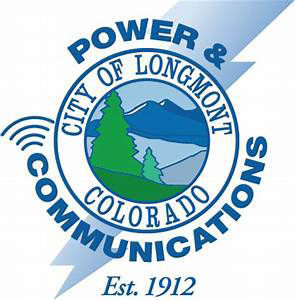

by Theresa Rose, edited by Libby James
The modest city of Longmont, Colorado holds the distinction of having the fastest internet service at the lowest cost in the entire U.S. Nextlight offers a Charter membership deal providing up to 1 gigabit (1000 megs) for $49.95 per month with uploads and downloads at equal speeds. By contrast, Comcast Xfinity offers up to 25 Mbps download speeds (with slower upload speeds) for $59.99 per month. Private sector communications companies have reason to be threatened, not only can the municipal model work, it can work very well.
Colorado Cable Telecommunications (CCT) lost an expensive gamble in the November 7th election, having spent $816,000 in a failed effort to defeat the vote on the municipal broadband measure. Another anti-municipal broadband group, Citizens for a Sustainable Economy, spent $85,000.
There is a lot of misinformation circulating in cyberspace. One document earning notoriety is Lessons in Municipal Broadband from Lafayette, Louisiana by Steven Titch, Reason Foundation, cites LUS Fiber, the municipal broadband operation in Lafayette, as an example of how the model cannot work. It is true the project has been expensive for the city and is taking a long time to pay off. However, Mr. Titch saw fit to make statements that are blatantly untrue as in the heading of paragraph C of the chapter “The Future of LUS Fiber”. In this chapter he states, “the city government props up LUS Fiber, while cutting corners and transparency,” and continues, “Even as LUS Fiber boasts about increasing revenues, more of those revenues are coming from the city treasury.”
LUS Fiber responded to Titch with a document of its own: LUS Fiber – Response to Mr. Steven Titch. The response to the above statement was, “LUS Fiber budgets and pays all its own expenses and, through detailed full-cost accounting, pays its share of allocatable costs.”
The back and forth between Mt Titch and LUS Fiber can be read in full at these two sites:
http://reason.org/files/municipal_broadband_lafayette.pdf
http://www.lusfiber.com/docs/LUSFiberResponse-TitchArticle.pdf
The city of Provo, Utah, did not succeed with its municipal broadband network, instituted in 2004. By 2008 iProvo, Provo’s $39.5 million wholesale fiber-to-the-premises network, was behind on its business plan in revenues and numbers of customers. iProvo received nearly $1 million in extra funding in 2007, and then the utility asked the city to budget an additional $1.2 million to cover expected losses. In its December 2007 report, iProvo said losses from July through October 2007 totaled $214,000.
Provo bailed out of iProvo in 2013, when Google bought the company for $1.00. Google took over Provo’s internet and television service and its remaining construction loans. Google had good reasons for doing what it did. The Provo area ranked second in the nation in patent growth and also ranked as one of the top places to live and do business in the U.S.
Tom Roiniotis, general manager of Longmont Power & Communications, blames the failure of iProvo on a wholesale service model, allowing private ISP service providers to compete. One of the Longmont consultants indicated that part of the problem is too many people trying to get a slice of a limited revenue pie. In a wholesale model, the muni needs to charge enough to cover its costs of building and maintaining the system to the independent Internet service providers. Those providers need to charge rates high enough to cover their costs and make a profit. The direct service model provided by NextLight charges customer’s rates to cover its costs of providing a service, as a public utility and not for profit.
service model, allowing private ISP service providers to compete. One of the Longmont consultants indicated that part of the problem is too many people trying to get a slice of a limited revenue pie. In a wholesale model, the muni needs to charge enough to cover its costs of building and maintaining the system to the independent Internet service providers. Those providers need to charge rates high enough to cover their costs and make a profit. The direct service model provided by NextLight charges customer’s rates to cover its costs of providing a service, as a public utility and not for profit.
He goes on to say the just because iProvo failed, it doesn’t mean all public broadband ventures are doomed to fail. In fact, across the country there are many examples of successful public broadband ventures. Private sector broadband ventures are subject to failure also, but as Mr. Roiniotis points out “we don’t all jump and say these failures are proof that the private sector can’t succeed.”
Support Northern Colorado Journalism
Show your support for North Forty News by helping us produce more content. It's a kind and simple gesture that will help us continue to bring more content to you.
BONUS - Donors get a link in their receipt to sign up for our once-per-week instant text messaging alert. Get your e-copy of North Forty News the moment it is released!
Click to Donate

Being someone who lives in Longmont and uses NextLight daily, I have to say that Longmont, did, indeed, do it right. Remember though that we had some significant advantages over other cities. We already owned our own electric utility which means we owned the poles and we had the infrastructure such as trucks, phone support, billing systems, etc. that we could reasonably easily build a fiber network on top of. We didn’t have to fight the local for-profit electric utility, for instance, to get access to our own citizens. Longmont’s had a very forward-thinking government for at least a century (when we first decided to create our own not for profit power company for our citizens). Most cities, unfortunately, can’t claim the same.